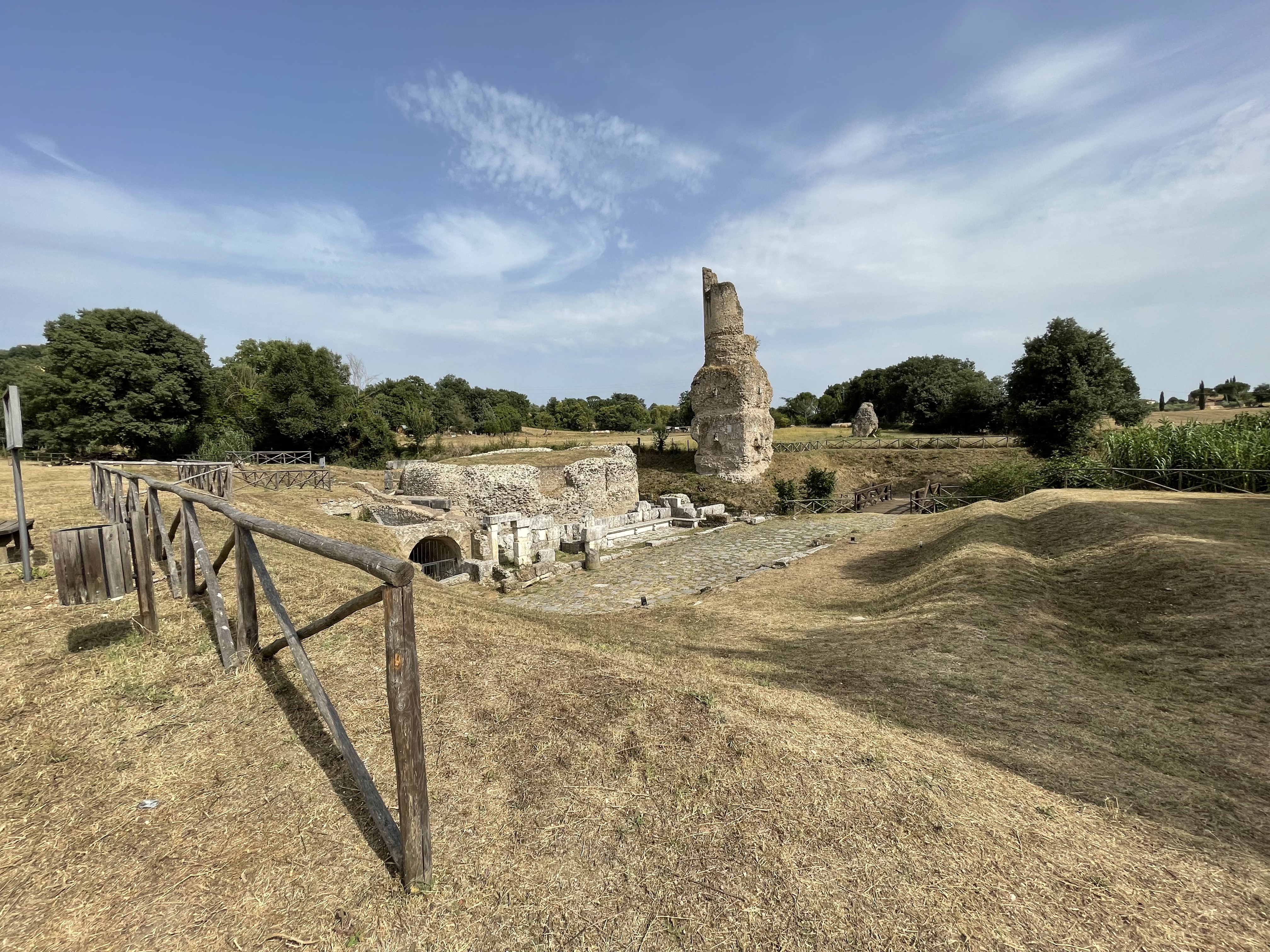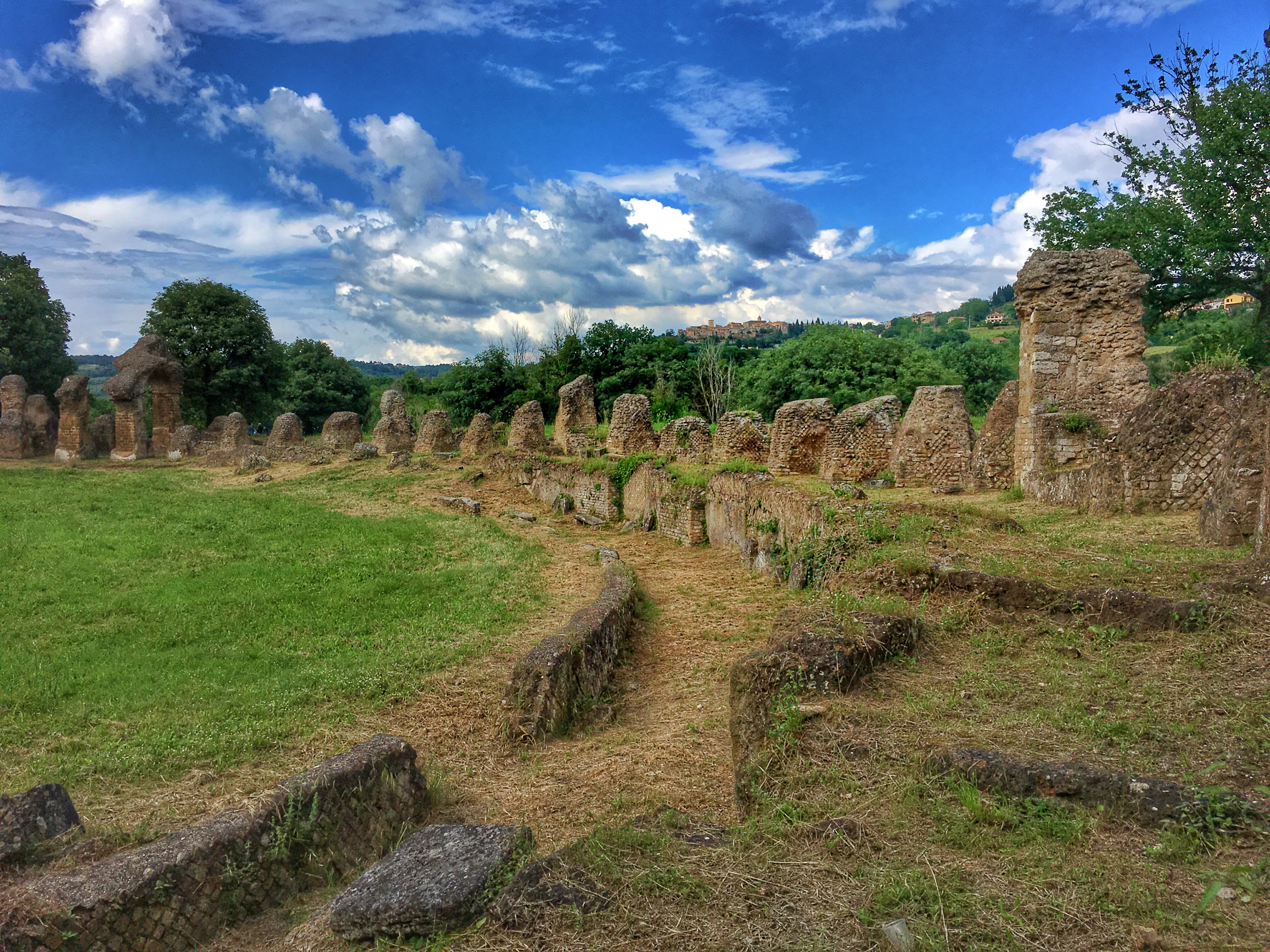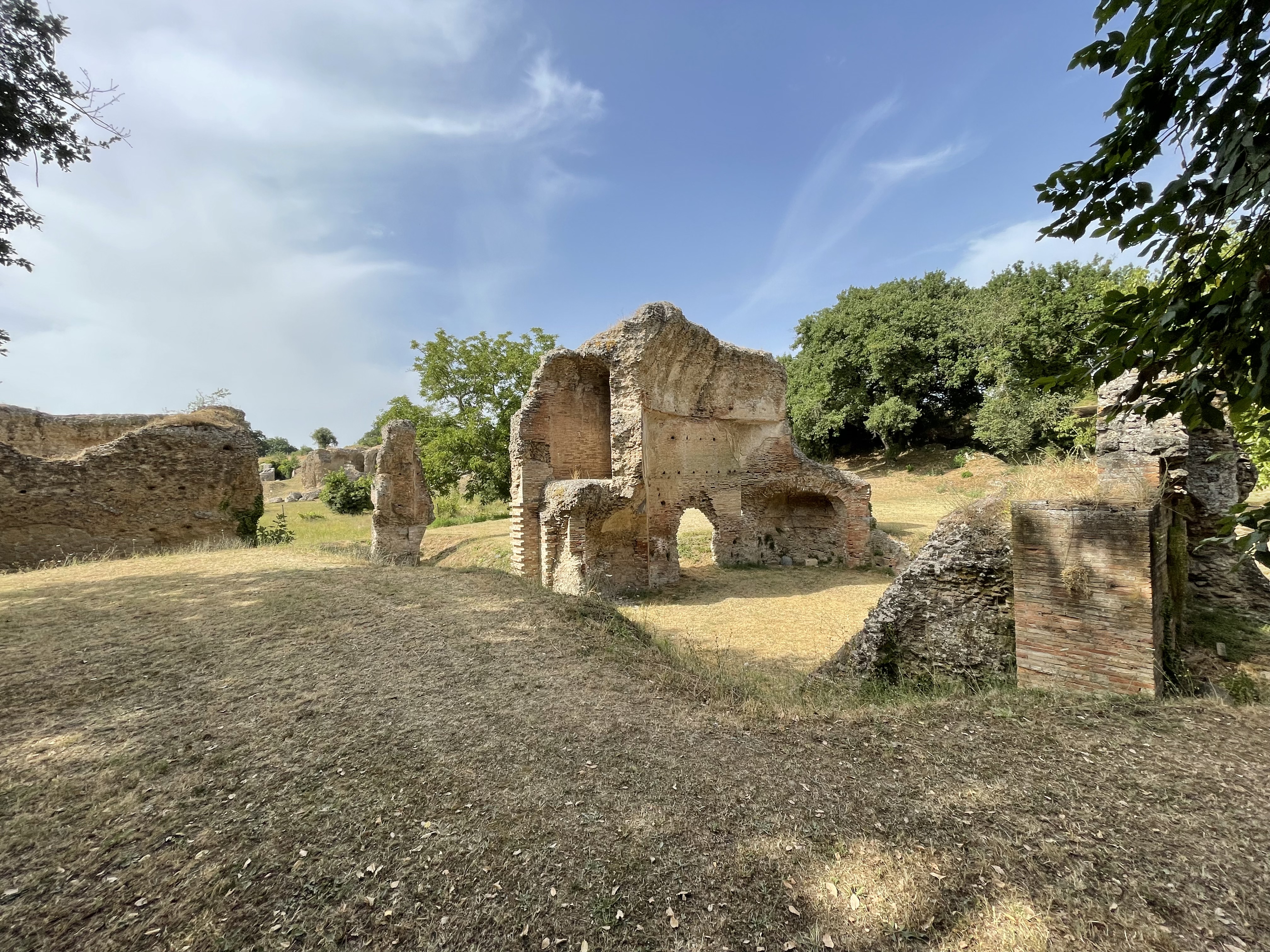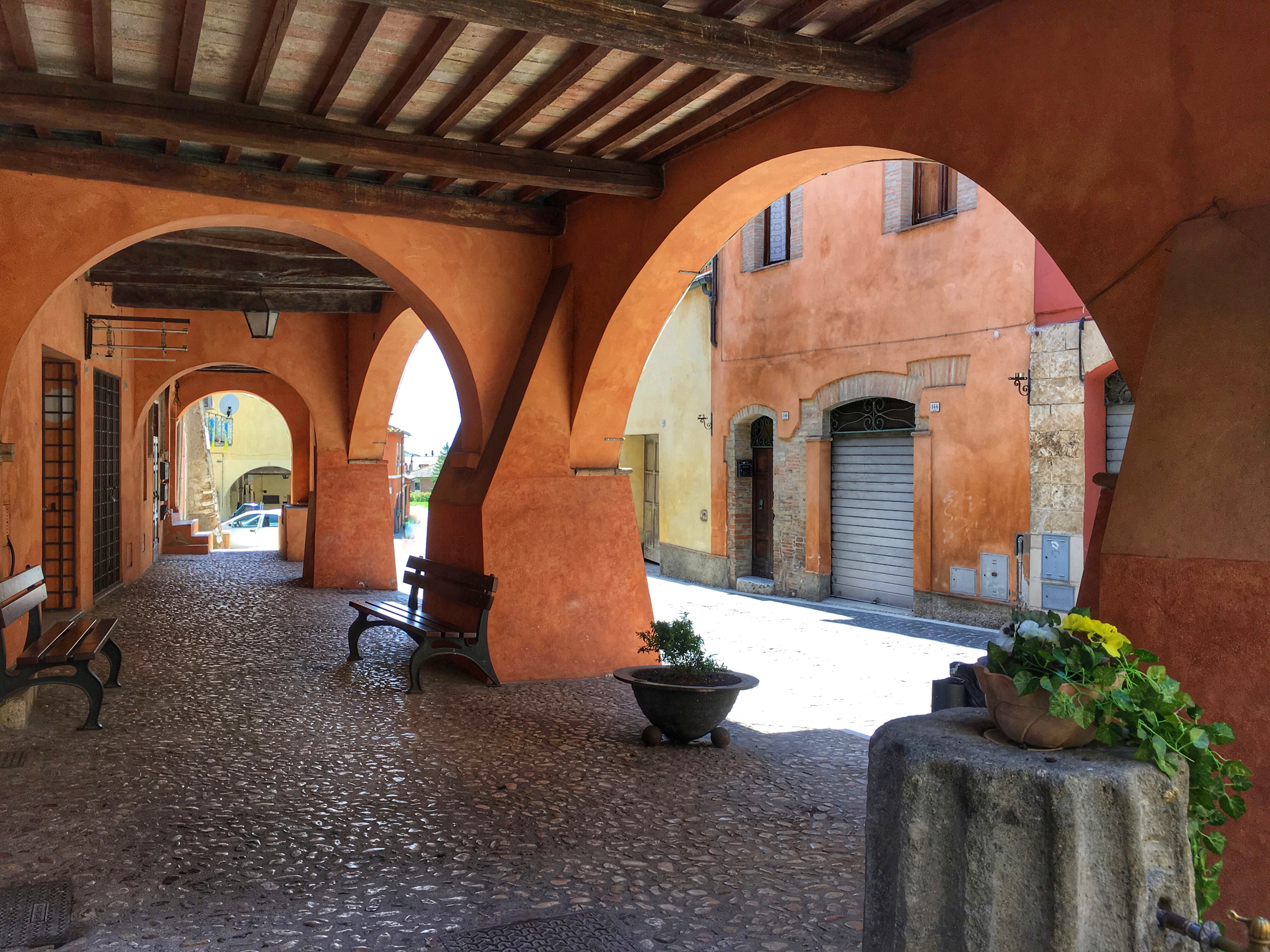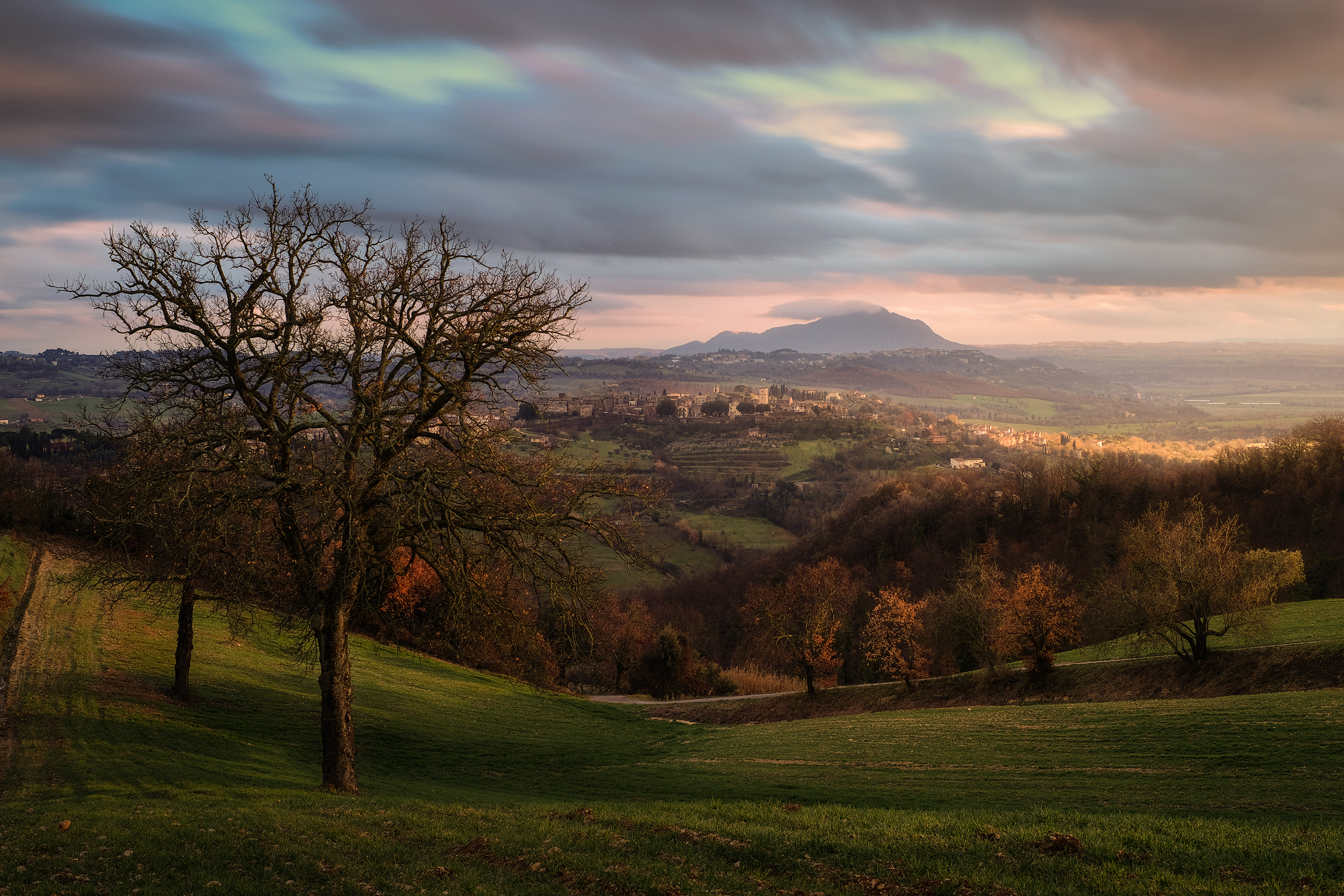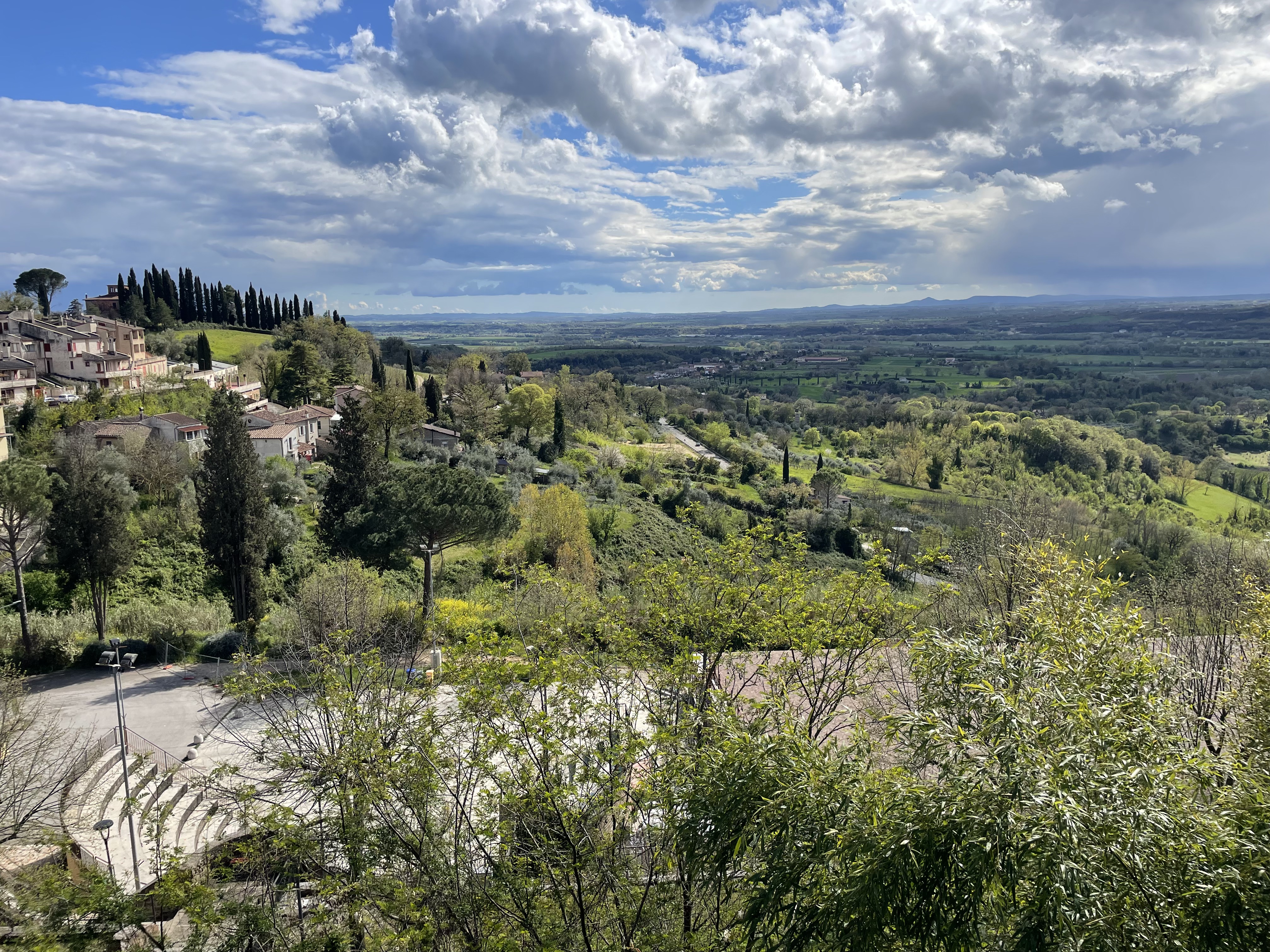Reconnecting with nature
"Village of Workshops and Crafts"
"Village of Workshops and Crafts: Craftsmanship, Culture, and Innovation for a Sustainable Future"
The Village of Workshops and Crafts is a cultural and social regeneration initiative in the Municipality of Otricoli, Umbria.The project aims to establish a network of craft, food & wine, and artistic workshops to enhance local traditions and create new economic opportunities
The workshops offer educational and interactive experiences for citizens,young people, the elderly, and tourists, transforming the village into a hub of artisanal innovation and generating new flows of experiential tourism
The workshops offer educational and interactive experiences for citizens,young people, the elderly, and tourists, transforming the village into a hub of artisanal innovation and generating new flows of experiential tourism
Italy
Local
OTRICOLI
Mainly rural
It refers to other types of transformations (soft investment)
Yes
2021-03-14
Yes
NATIONAL RECOVERY AND RESILIENCE PLAN (PNRR) INVESTMENT 2.1 ATTRACTIVENESS OF THE VILLAGES (M1C3) FINANCED BY THE EUROPEAN UNION – NEXTGENERATIONEU – INTERVENTION LINE B CULTURAL AND SOCIAL REGENERATION OF HISTORIC VILLAGES
No
Yes
No
No
As a representative of an organisation
The Otricoli Village of Workshops and Crafts is an urban and social regeneration project designed to counteract depopulation, enhance historical heritage, and create new economic opportunities through sustainable tourism, craftsmanship, and innovation. The initiative aims to transform historic spaces into centers for training, production, and promotion of local traditions, fostering inclusion and accessibility for all. The project actively involves different social groups. Young people and unemployed individuals are provided with training opportunities and new professional prospects. Women and vulnerable individuals are supported through artisanal and social activities that encourage inclusion. The expertise of craftsmen and elderly people is preserved and promoted, ensuring the transmission of traditional skills and knowledge. Tourists and visitors are offered authentic cultural and gastronomic experiences, enriching their engagement with the local heritage. At the same time, local businesses and farmers benefit from an economic model that fosters sustainability and circular practices. Among the main objectives of the initiative is the creation of new economic opportunities, promoting traditional crafts and encouraging the growth of local start-ups. Environmental sustainability is a fundamental pillar, achieved through the use of eco-friendly materials, the restoration of historical buildings, and the implementation of a zero-kilometer educational garden. Sustainable mobility is also a key aspect, with the development of cycling routes, slow travel paths, and non-motorized river routes. Social inclusion plays a crucial role, ensuring accessible infrastructure and activities for people with disabilities. The project also focuses on the enhancement of cultural heritage through events and educational itineraries that engage the local community and visitors alike.
Regeneration involves the restoration and enhancement of the historic village through craftsmanship, culture, and sustainable tourism.
Inclusion ensures universal accessibility, fosters the engagement of vulnerable groups, and encourages active community participation
Sustainability is reflected in the use of eco-friendly materials, the promotion of sustainable mobility, organic farming, and circular economy principles
Innovation drives the project through digitalization, artisanal e-commerce, interactive visitor experiences, and technological training.
Biodiversity is safeguarded by protecting the local ecosystem through social gardens, ecological river routes, and slow travel pathways
The Village of Workshops and Trades in Otricoli promotes environmental, economic, and social sustainability through the regeneration of the historic village, the restoration of cultural heritage, and the enhancement of local resources. In terms of sustainability, the objective is to create a replicable model of sustainable tourism, soft mobility, and circular economy, generating tangible benefits for the community. Energy efficiency is ensured through the use of renewable energy sources for public lighting and renovated structures. Historical buildings are restored using bioarchitecture and local materials, improving thermal insulation and reducing energy consumption. Sustainable mobility is supported by a cycle path that connects the village to regional routes, slow travel itineraries, and a river path free of combustion engines to protect biodiversity. Electric shuttles link key areas, reducing CO₂ emissions and facilitating accessibility.
The circular economy is encouraged through the reuse of materials for installations, the creation of a zero-kilometer artisan market, and a community garden based on organic and traditional farming practices, which will also serve as a platform for hands-on educational experiences. Composting reduces organic waste and promotes sustainable food practices.
Inclusion is a fundamental principle of the initiative, with architectural barriers removed, accessible pathways created, and the active participation of vulnerable groups in workshops and production activities. The Village of Workshops and Trades in Otricoli represents an innovative model of regeneration, where tradition and innovation come together to create a vibrant, productive, and accessible village—one that can be replicated in other European communities.
The circular economy is encouraged through the reuse of materials for installations, the creation of a zero-kilometer artisan market, and a community garden based on organic and traditional farming practices, which will also serve as a platform for hands-on educational experiences. Composting reduces organic waste and promotes sustainable food practices.
Inclusion is a fundamental principle of the initiative, with architectural barriers removed, accessible pathways created, and the active participation of vulnerable groups in workshops and production activities. The Village of Workshops and Trades in Otricoli represents an innovative model of regeneration, where tradition and innovation come together to create a vibrant, productive, and accessible village—one that can be replicated in other European communities.
The Village of Workshops and Trades in Otricoli is a cultural regeneration project that enhances architectural heritage, local identity, and the natural landscape to improve the experience of both residents and visitors. The goal is to restore beauty and functionality to public and private spaces through a design that seamlessly blends tradition and innovation, fostering a deep sense of belonging. The restoration of historic buildings is carried out using local materials and bio-architecture techniques, preserving stylistic coherence with the traditional architecture of the village. Colors, materials, and structural elements are carefully selected to respect the village’s identity and maintain its authentic aesthetic. The project also integrates artistic and cultural pathways, featuring contemporary art exhibitions that engage in dialogue with the historical setting. Regenerated spaces are designed to evoke positive emotions and strengthen social cohesion. Artisanal workshops, craft shops, and exhibition areas serve as gathering places, encouraging social interaction and well-being. Local food and wine traditions become part of the cultural experience, with workshops and tastings that not only celebrate heritage but also actively engage visitors. Sustainable public lighting enhances the village’s beauty during the evening hours, improving the quality of urban spaces. Street furniture incorporates natural elements and handcrafted artifacts, enriching the visual and tactile experience. The restoration of green spaces and the creation of urban gardens contribute to the landscape’s aesthetic appeal and foster harmony between nature and architecture. Participation in workshops also fosters a continuous education in urban decorum, strengthening the sense of belonging to both the territory and its cultural heritage.
The project is designed to be replicable in other historic villages seeking to merge urban regeneration with aesthetic enhancement.
The project is designed to be replicable in other historic villages seeking to merge urban regeneration with aesthetic enhancement.
The Village of Workshops and Trades in Otricoli is a social inclusion initiative that promotes universal accessibility, active participation, and economic integration for vulnerable groups. The project ensures the involvement of people with disabilities, young individuals, the elderly, women, and economically disadvantaged groups, offering them opportunities for training, employment, and social growth. Universal accessibility is a fundamental aspect of the initiative. Architectural barriers are removed, and dedicated pathways are introduced for individuals with reduced mobility and the visually impaired. Digital tools, interactive technologies, and multimedia support further enhance accessibility, making the experience more inclusive for all. Restored buildings and public spaces are designed to facilitate inclusion, featuring accessible rest areas and signage in simplified language. Economic inclusion is fostered through scholarships for artisanal training, incentives for female and youth entrepreneurship, and the development of a zero-kilometer artisan market that creates new job opportunities. The workshops are structured to welcome vulnerable individuals, providing training and mentorship to support their professional integration. The initiative is highly replicable in other historic villages and rural communities across Italy and Europe that aim to integrate urban regeneration, social inclusion, and sustainable economic development. More broadly, the participatory approach and the emphasis on local resources can serve as adaptable tools for fostering new opportunities for social cohesion, territorial growth, and cross-community collaborations, including city twinning initiatives.
The Village of Workshops and Trades in Otricoli stands out for its participatory approach, multi-level engagement, and integration of different disciplines to maximize its social and environmental impact. Active involvement of citizens and civil society is a key element of the project, ensuring co-design and long-term sustainability.
1.Participatory Process:
The project involves citizens, local associations, and economic stakeholders from the initial planning stages through public meetings, surveys, and co-creation workshops.
2.Multi-Level Engagement: The initiative is based on a multi-level governance model involving various stakeholders at local, regional, national, and European levels. Locally, the Municipality of Otricoli collaborates with cultural associations, third-sector organizations, and small businesses to ensure the sustainable management of the project. At the regional and national levels, the initiative aligns with programs for heritage enhancement and the development of rural areas. At the European level, it fosters exchanges with other urban regeneration and sustainable tourism experiences.
3.Transdisciplinary Approach:
The initiative combines craftsmanship, experiential tourism, technology, environmental sustainability, and social inclusion, creating an ecosystem that fosters innovation and collective well-being.
○ Sustainable Restoration
○ Sustainability and Biodiversity
○ Digitalization and Accessibility
○ Social Inclusion and Training
Active involvement of citizens and civil society will generate a positive impact in multiple areas. The local economy will benefit from new job opportunities, increased tourist attractiveness, and support for small businesses. A stronger sense of belonging will emerge through greater community participation, transmission of traditions, and reinforcement of social cohesion. Inclusion and accessibility will be promoted by reducing inequalities, improving urban accessibility, and engaging vulnerable groups.
1.Participatory Process:
The project involves citizens, local associations, and economic stakeholders from the initial planning stages through public meetings, surveys, and co-creation workshops.
2.Multi-Level Engagement: The initiative is based on a multi-level governance model involving various stakeholders at local, regional, national, and European levels. Locally, the Municipality of Otricoli collaborates with cultural associations, third-sector organizations, and small businesses to ensure the sustainable management of the project. At the regional and national levels, the initiative aligns with programs for heritage enhancement and the development of rural areas. At the European level, it fosters exchanges with other urban regeneration and sustainable tourism experiences.
3.Transdisciplinary Approach:
The initiative combines craftsmanship, experiential tourism, technology, environmental sustainability, and social inclusion, creating an ecosystem that fosters innovation and collective well-being.
○ Sustainable Restoration
○ Sustainability and Biodiversity
○ Digitalization and Accessibility
○ Social Inclusion and Training
Active involvement of citizens and civil society will generate a positive impact in multiple areas. The local economy will benefit from new job opportunities, increased tourist attractiveness, and support for small businesses. A stronger sense of belonging will emerge through greater community participation, transmission of traditions, and reinforcement of social cohesion. Inclusion and accessibility will be promoted by reducing inequalities, improving urban accessibility, and engaging vulnerable groups.
The Village of Workshops and Trades in Otricoli was developed with a multi-level and participatory approach, involving both public and private actors at every stage of the process. Stakeholder engagement ensured that the project addressed community needs, aligned with territorial development strategies, and was integrated into broader cooperation networks.
1. Local-Level Engagement
At the municipal and territorial levels, the project was built through strong community involvement, including public meetings, co-design workshops, and direct participation from businesses and associations.
○ Municipality of Otricoli
○ Local Associations
○ Artisans and Local Businesses
○ Educational Institutions and Citizens
○ Residents and Social Associations
2. Regional-Level Engagement
At the regional level, the project aligns with Umbria’s development strategies for the enhancement of rural areas, with the support of public institutions and sector organizations.
○ Region of Umbria
○ GAL (Local Action Group)
○ Tourism and Cultural Organizations
3. National-Level Engagement
At the national level, the project benefits from integration with territorial development policies and historic village enhancement programs promoted by the government and research institutions.
○ Ministry of Culture and Ministry of Tourism
○ PNRR (National Recovery and Resilience Plan).
○ Universities and Research Centers
4. European-Level Engagement
The initiative is connected to European strategies and programs focusing on urban regeneration, environmental sustainability, and social innovation.
○ EU Cohesion Programs
○ European Networks of Sustainable Villages
○ International Exchanges and Partnerships
○ New European Bauhaus
Thanks to this participatory structure and collaboration across institutional and private levels, the initiative ensures:
7. An inclusive governance model
8. Sustainable and long-term management
9. A replicable project.
1. Local-Level Engagement
At the municipal and territorial levels, the project was built through strong community involvement, including public meetings, co-design workshops, and direct participation from businesses and associations.
○ Municipality of Otricoli
○ Local Associations
○ Artisans and Local Businesses
○ Educational Institutions and Citizens
○ Residents and Social Associations
2. Regional-Level Engagement
At the regional level, the project aligns with Umbria’s development strategies for the enhancement of rural areas, with the support of public institutions and sector organizations.
○ Region of Umbria
○ GAL (Local Action Group)
○ Tourism and Cultural Organizations
3. National-Level Engagement
At the national level, the project benefits from integration with territorial development policies and historic village enhancement programs promoted by the government and research institutions.
○ Ministry of Culture and Ministry of Tourism
○ PNRR (National Recovery and Resilience Plan).
○ Universities and Research Centers
4. European-Level Engagement
The initiative is connected to European strategies and programs focusing on urban regeneration, environmental sustainability, and social innovation.
○ EU Cohesion Programs
○ European Networks of Sustainable Villages
○ International Exchanges and Partnerships
○ New European Bauhaus
Thanks to this participatory structure and collaboration across institutional and private levels, the initiative ensures:
7. An inclusive governance model
8. Sustainable and long-term management
9. A replicable project.
The Village of Workshops and Trades in Otricoli is based on a transdisciplinary approach that integrates multiple disciplines and fields of knowledge to ensure a sustainable and inclusive regeneration. The project has involved experts from architecture, environmental sustainability, circular economy, tourism, social innovation, and technology, fostering a collaborative ecosystem that has generated significant added value.
Disciplines and Fields of Knowledge Involved
● Architecture and Restoration
● Environmental Sustainability and Land Management
● Circular Economy and Craftsmanship
● Experiential Tourism and Culture
● Technological Innovation and Accessibility
● Social Innovation and Inclusion
Interaction Between Disciplines and Added Value
The transdisciplinary approach has facilitated continuous interaction among professionals, ensuring integrated and innovative solutions. Architects worked alongside environmental experts to create sustainable spaces, while technology specialists collaborated with social sector operators to improve digital accessibility. The integration of circular economy principles with tourism development enabled the creation of a replicable regeneration model capable of generating employment while preserving the authenticity of local resources.
Thanks to this synergy, the project has moved beyond a sectorial approach, shaping a village that not only safeguards its cultural heritage but also makes it inclusive, sustainable, and dynamic. This holistic vision enhances the quality of life for the local community while increasing the region’s attractiveness as a tourist destination.
Disciplines and Fields of Knowledge Involved
● Architecture and Restoration
● Environmental Sustainability and Land Management
● Circular Economy and Craftsmanship
● Experiential Tourism and Culture
● Technological Innovation and Accessibility
● Social Innovation and Inclusion
Interaction Between Disciplines and Added Value
The transdisciplinary approach has facilitated continuous interaction among professionals, ensuring integrated and innovative solutions. Architects worked alongside environmental experts to create sustainable spaces, while technology specialists collaborated with social sector operators to improve digital accessibility. The integration of circular economy principles with tourism development enabled the creation of a replicable regeneration model capable of generating employment while preserving the authenticity of local resources.
Thanks to this synergy, the project has moved beyond a sectorial approach, shaping a village that not only safeguards its cultural heritage but also makes it inclusive, sustainable, and dynamic. This holistic vision enhances the quality of life for the local community while increasing the region’s attractiveness as a tourist destination.
The Village of Workshops and Trades in Otricoli stands out for its integrated and innovative approach, going beyond traditional urban regeneration and territorial development practices. The project’s innovation lies in the integration of environmental sustainability, social inclusion, circular economy, and digital technology, creating a replicable development model for historic villages.
1. Innovation Compared to Traditional Urban Regeneration
Traditional urban redevelopment efforts often focus solely on the physical restoration of buildings and infrastructure, without a long-term strategy for their use. The Otricoli initiative goes beyond this, transforming the village into a productive and cultural hub, with spaces dedicated to training, craftsmanship, and experiential tourism.
2. Innovation in Tourism and Circular Economy
While many tourism initiatives rely on a passive model of heritage enjoyment, Otricoli promotes an active experience, where tourists and residents directly participate in village life through workshops and immersive activities.
3. Innovation in Accessibility and Digital Technologies
Traditional approaches often overlook accessibility and social inclusion. This project introduces advanced technological solutions to ensure an inclusive and interactive experience.
4. Social Innovation and Community Participation
Whereas most urban regeneration projects primarily involve public entities and industry professionals, the Otricoli initiative places the local community at the heart of the transformation process.
The initiative establishes itself as an innovative development model for small villages, blending tradition and innovation, local economy and sustainable tourism, urban regeneration, and social inclusion. This approach moves beyond conventional strategies, creating a resilient ecosystem that can be replicated in other territorial contexts, both in Italy and across Europe.
1. Innovation Compared to Traditional Urban Regeneration
Traditional urban redevelopment efforts often focus solely on the physical restoration of buildings and infrastructure, without a long-term strategy for their use. The Otricoli initiative goes beyond this, transforming the village into a productive and cultural hub, with spaces dedicated to training, craftsmanship, and experiential tourism.
2. Innovation in Tourism and Circular Economy
While many tourism initiatives rely on a passive model of heritage enjoyment, Otricoli promotes an active experience, where tourists and residents directly participate in village life through workshops and immersive activities.
3. Innovation in Accessibility and Digital Technologies
Traditional approaches often overlook accessibility and social inclusion. This project introduces advanced technological solutions to ensure an inclusive and interactive experience.
4. Social Innovation and Community Participation
Whereas most urban regeneration projects primarily involve public entities and industry professionals, the Otricoli initiative places the local community at the heart of the transformation process.
The initiative establishes itself as an innovative development model for small villages, blending tradition and innovation, local economy and sustainable tourism, urban regeneration, and social inclusion. This approach moves beyond conventional strategies, creating a resilient ecosystem that can be replicated in other territorial contexts, both in Italy and across Europe.
The initiative is based on an integrated and multidisciplinary approach that combines urban regeneration, local economic development, social inclusion, and environmental sustainability. The initiative follows a structured methodology centered on three key principles: active participation, multi-level governance, and innovative valorization of territorial resources. This ensures a lasting impact by engaging the local community and promoting the economic, environmental, and social sustainability of the project.
1.Participatory Approach and Community Engagement
The entire design and implementation process has been developed with the active involvement of the local community and various stakeholders.
This ensures that the initiative is not imposed from above but responds to the real needs of the population, generating a long-lasting positive impact.
2.Urban Regeneration and Sustainability Approach
The project employs an innovative strategy for enhancing public spaces and restoring historic buildings through sustainable practices.
3.Educational and Inclusive Approach
The initiative adopts an educational methodology based on experiential learning and social inclusion.
The goal is to create a hands-on learning model that fosters social inclusion and provides skills applicable in the labor market.
4.Multi-Level Governance and Institutional Collaboration
The project follows a governance model that coordinates different institutional levels to ensure sustainability and effectiveness.
This governance model ensures efficient management, integration between public and private sectors, and the potential for replication in other historic villages across Europe.
5.Use of Innovative Technologies for Accessibility and Sustainable Tourism
The technological approach plays a key role in making the project inclusive and attractive to a broad audience.
6.The integration of technology expands the visitor target and ensures an innovative and inclusive
1.Participatory Approach and Community Engagement
The entire design and implementation process has been developed with the active involvement of the local community and various stakeholders.
This ensures that the initiative is not imposed from above but responds to the real needs of the population, generating a long-lasting positive impact.
2.Urban Regeneration and Sustainability Approach
The project employs an innovative strategy for enhancing public spaces and restoring historic buildings through sustainable practices.
3.Educational and Inclusive Approach
The initiative adopts an educational methodology based on experiential learning and social inclusion.
The goal is to create a hands-on learning model that fosters social inclusion and provides skills applicable in the labor market.
4.Multi-Level Governance and Institutional Collaboration
The project follows a governance model that coordinates different institutional levels to ensure sustainability and effectiveness.
This governance model ensures efficient management, integration between public and private sectors, and the potential for replication in other historic villages across Europe.
5.Use of Innovative Technologies for Accessibility and Sustainable Tourism
The technological approach plays a key role in making the project inclusive and attractive to a broad audience.
6.The integration of technology expands the visitor target and ensures an innovative and inclusive
The initiative is designed as a replicable model for other historic villages, rural areas, and urban contexts that require economic, social, and environmental regeneration. The transferable elements include the methodology, processes, technologies, and economic models implemented in the project.
1. Replicable Methodology for Urban and Social Regeneration
The approach used for the regeneration of Otricoli can be applied in other villages and small towns facing depopulation or seeking a sustainable local development model.
● Sustainable rehabilitation of historical heritage
● Community involvement
● Inclusion of vulnerable groups
2. Transferable Multi-Level Governance and Processes
The Otricoli initiative has developed a collaborative governance model that involves multiple institutional levels and private-sector stakeholders.
● Public-private partnerships
● Cross-sectoral interaction
● Long-term economic sustainability.
3. Innovative Technologies Applicable to Other Contexts
The project integrates digital tools and technological innovations to enhance accessibility, promotion, and the visitor experience.
● Digital platforms for training and promotion
● Digitalization and interactive pathways
● Universal accessibility tools
4. Replicable Sustainable Economic Models
The project has developed a local economy and sustainable tourism model that can be adopted by other communities to maximize the value of territorial resources.
● Experiential tourism and interactive workshops
● Zero-kilometer artisanal market
● Regenerative agriculture and community gardens
5. Transferable Learnings for Other Beneficiaries and Contexts
The experience of Otricoli has generated insights and best practices that can be valuable for other territories seeking a balanced development model.
●The importance of active participation
●Integration of tradition and innovation
●A flexible and scalable development model
The Village of Workshops and Trades in
1. Replicable Methodology for Urban and Social Regeneration
The approach used for the regeneration of Otricoli can be applied in other villages and small towns facing depopulation or seeking a sustainable local development model.
● Sustainable rehabilitation of historical heritage
● Community involvement
● Inclusion of vulnerable groups
2. Transferable Multi-Level Governance and Processes
The Otricoli initiative has developed a collaborative governance model that involves multiple institutional levels and private-sector stakeholders.
● Public-private partnerships
● Cross-sectoral interaction
● Long-term economic sustainability.
3. Innovative Technologies Applicable to Other Contexts
The project integrates digital tools and technological innovations to enhance accessibility, promotion, and the visitor experience.
● Digital platforms for training and promotion
● Digitalization and interactive pathways
● Universal accessibility tools
4. Replicable Sustainable Economic Models
The project has developed a local economy and sustainable tourism model that can be adopted by other communities to maximize the value of territorial resources.
● Experiential tourism and interactive workshops
● Zero-kilometer artisanal market
● Regenerative agriculture and community gardens
5. Transferable Learnings for Other Beneficiaries and Contexts
The experience of Otricoli has generated insights and best practices that can be valuable for other territories seeking a balanced development model.
●The importance of active participation
●Integration of tradition and innovation
●A flexible and scalable development model
The Village of Workshops and Trades in
The Village of Workshops and Trades in Otricoli tackles some of the most pressing global challenges through a local, sustainable, and replicable approach. The project addresses issues such as climate change, biodiversity loss, social inclusion, economic decline in small towns, and cultural heritage preservation by implementing concrete solutions that can be adapted to other regions.
1. Climate Change and Ecological Transition
● Local solution: The initiative promotes soft mobility through cycling routes, pedestrian paths, and a river route free of motorized boats to reduce transport-related emissions.
2. Biodiversity Loss and Land Degradation
● Local solution: The initiative includes the creation of a social and educational garden based on regenerative agriculture practices to restore soil fertility and support zero-kilometer production. Green areas are also restored, and educational trails on biodiversity are introduced
● 3. Rural Depopulation and Economic Crisis in Small Towns
● Local solution: The project creates new job opportunities through artisanal workshops and training programs, encouraging the launch of local businesses and zero-kilometer production.
4. Social Exclusion and Inequality
● Local solution: The initiative includes training programs for young people and women, offering scholarships and incentives for entrepreneurship. The project ensures universal accessibility in public and tourist spaces by providing inclusive pathways and digital tools
5. Loss of Cultural and Traditional Heritage
● Local solution: The Village of Workshops and Trades preserves cultural heritage through the restoration of historic buildings and the transmission of artisanal skills across generations
6. Unsustainable Tourism and Overcrowding of Major Destinations
● Local solution: The project promotes experiential and decentralized tourism through slow travel itineraries and cycling routes,
1. Climate Change and Ecological Transition
● Local solution: The initiative promotes soft mobility through cycling routes, pedestrian paths, and a river route free of motorized boats to reduce transport-related emissions.
2. Biodiversity Loss and Land Degradation
● Local solution: The initiative includes the creation of a social and educational garden based on regenerative agriculture practices to restore soil fertility and support zero-kilometer production. Green areas are also restored, and educational trails on biodiversity are introduced
● 3. Rural Depopulation and Economic Crisis in Small Towns
● Local solution: The project creates new job opportunities through artisanal workshops and training programs, encouraging the launch of local businesses and zero-kilometer production.
4. Social Exclusion and Inequality
● Local solution: The initiative includes training programs for young people and women, offering scholarships and incentives for entrepreneurship. The project ensures universal accessibility in public and tourist spaces by providing inclusive pathways and digital tools
5. Loss of Cultural and Traditional Heritage
● Local solution: The Village of Workshops and Trades preserves cultural heritage through the restoration of historic buildings and the transmission of artisanal skills across generations
6. Unsustainable Tourism and Overcrowding of Major Destinations
● Local solution: The project promotes experiential and decentralized tourism through slow travel itineraries and cycling routes,
The Village of Workshops and Trades in Otricoli has been designed to ensure gradual and sustainable development, with planned activities structured in multiple phases to maximize the impact on the territory and the local community. The project will continue to grow through structural interventions, training programs, economic activities, and cultural initiatives, all inspired by the principles of the New European Bauhaus (NEB): sustainability, inclusion, and beauty. The village has been redeveloped with a strong focus on harmony between architecture, landscape, and urban design. The restoration preserves the historical identity while integrating artistic and innovative elements to enhance public spaces.
Implementation Phases According to NEB Principles
The project is structured into three levels of implementation, where activities will be progressively expanded to ensure a lasting and replicable impact.
1. Infrastructure Development and Consolidation
The first phase focuses on completing restoration works, launching the first workshops, and creating essential infrastructure. Cycling routes and slow travel paths are enhanced with accessible signage. The first renewable energy systems are implemented in public buildings.
2. Expansion and Innovation
The second phase aims to strengthen the economic and cultural dimensions of the project by introducing digital technologies and expanding experiential tourism.
3. Replicability and Internationalization
The final phase focuses on transforming the Otricoli model into a successful case study replicable in other European villages.
4. Long-Term Impact and Sustainability
The initiative generates significant economic, social, and environmental impact, ensuring its long-term sustainability. The creation of new jobs and business opportunities for artisans and local enterprises guarantees financial stability.
Implementation Phases According to NEB Principles
The project is structured into three levels of implementation, where activities will be progressively expanded to ensure a lasting and replicable impact.
1. Infrastructure Development and Consolidation
The first phase focuses on completing restoration works, launching the first workshops, and creating essential infrastructure. Cycling routes and slow travel paths are enhanced with accessible signage. The first renewable energy systems are implemented in public buildings.
2. Expansion and Innovation
The second phase aims to strengthen the economic and cultural dimensions of the project by introducing digital technologies and expanding experiential tourism.
3. Replicability and Internationalization
The final phase focuses on transforming the Otricoli model into a successful case study replicable in other European villages.
4. Long-Term Impact and Sustainability
The initiative generates significant economic, social, and environmental impact, ensuring its long-term sustainability. The creation of new jobs and business opportunities for artisans and local enterprises guarantees financial stability.

